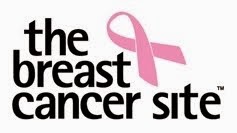Electrolyte balance (especially potassium and sodium) is important for ostomates. When the colon (large intestine is removed, a greater rist for electrolyte imbalance can occur. Diarrhea, ixcessive perspiration and vomiting can increase this risk. A person with short bowel syndrome is at high risk. Their electrolytes should be monitored closely. Your diet should include fluids and foods rich in electrolytes. A general rule is to salt foods to taste. Do not exclude sodium in the diet unless instructed to do so by your doctor.
Electrolyte Balance - Electrolytes refer to the normal chemicals dissolved in body fluids needed to maintain body activity. If electrolytes are out of balance, a person may become weak or ill and may need to take medications by mouth or intravenously.
Fluid and Electrolyte Problems:
Problem - Dehydration
Symptoms - Increased thirst, dry mouth, dry skin, decreased urine output, fatigue, shorness of breath, headaches, dry eyes and abdominal cramping.
Treatment - Increase fluids (any type, Gatorade/PowerAde are high in potassium and sodium). Daily intake of fluids should be 8-10 8oz. glasses.
Problem - Sodium Depletion
Symptoms - Loss of appetite, drowsiness, headaches, abdominal and leg cramping, feelings of faintness particularly when standing, cold sensation in arms or legs.
Treatment - Increase intake of foods and beverages high in sodium, such as any regular soup, bouillon and Gatorade/PowerAde.
Problem - Potassium Depletion
Symptoms - Fatigue, muscle weakness, gas, bloating, shortness of breath, decreased sensation in arms and legs.
Treatment - Increase intake of foods high in potassium, such as orange juice, bananas, and/or Gatorade/PowerAde.
Foods high in potassium: black-eyed peas, bananas, bouillon, chicken, fish, oranges, pinto beans, potatoes, raisins, tomato or vegetable soups, veal, watermelon and yogurt, to name a few.
Foods high in sodium: broth, buttermilk, canned soups, canned vegetables, cheese, soy sauce, table salt, tomato juice and most commercially prepared foods.
Source: UOAA Diet & Nutrition Guide, UOAA Update 3/12
Wednesday, March 27, 2013
Subscribe to:
Post Comments (Atom)










No comments:
Post a Comment